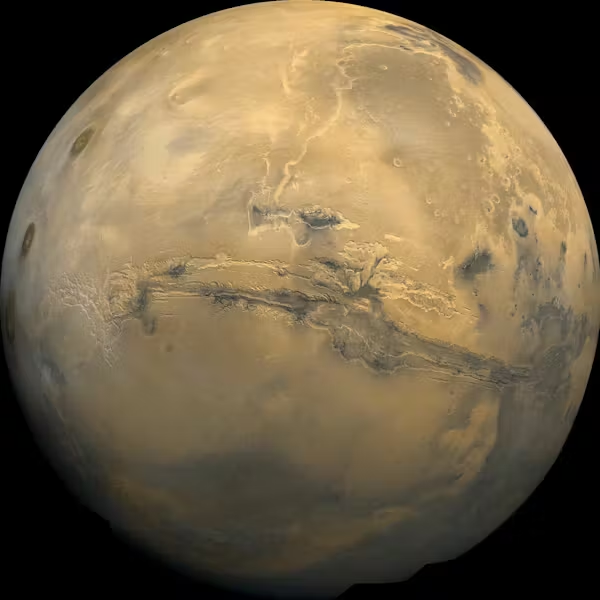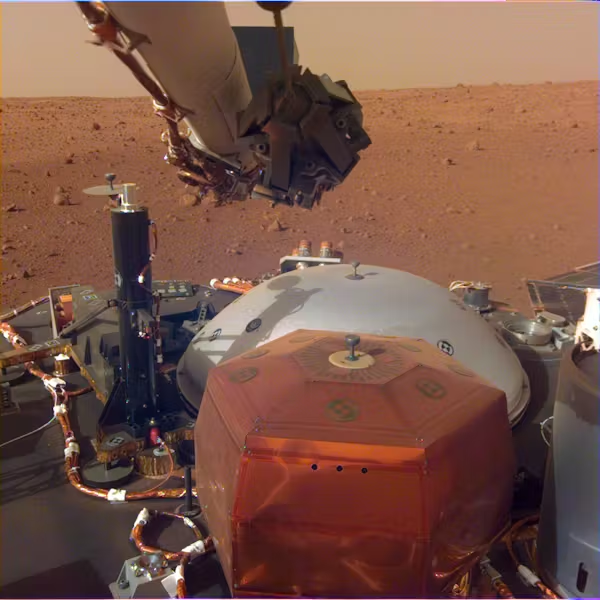The Martian Dichotomy: Unveiling the Mystery Behind Mars’ Great Divide

Mars hosts one of the Solar System’s most intriguing enigmas: the Martian dichotomy. This stark contrast in the planet’s terrain has puzzled researchers since it was first identified in the 1970s.
The southern highlands, which span about two-thirds of Mars’ surface, stand 5 to 6 kilometers higher than the northern lowlands. This abrupt disparity is unparalleled anywhere else in the Solar System.
What Caused This Extreme Difference?
For decades, scientists have debated whether the dichotomy was caused by external forces, such as a colossal asteroid collision, or internal processes, like heat flows within Mars’ molten interior.
Recent research published in Geophysical Research Letters provides new insights. By analyzing seismic activity recorded by NASA’s Insight lander, positioned near the boundary between the highlands and lowlands, scientists uncovered evidence pointing to an internal origin for this Martian divide.

Unearthing the Martian Dichotomy
The differences between the highlands and lowlands extend beyond elevation. The southern highlands are dotted with impact craters and ancient lava flows, while the northern lowlands feature smooth, relatively unscarred terrain.
Geophysical data reveal that the Martian crust is significantly thicker beneath the highlands. Additionally, the highland rocks are magnetized—indicating their formation during a period when Mars had a global magnetic field—while the lowland rocks are not.
This dichotomy was first observed in the 1970s through imagery from the Viking probes, which highlighted differences in surface height and crater density. The number of craters serves as a marker for surface age: the older the terrain, the more craters it has. By this measure, the highlands are much older than the lowlands.

Scientists also speculate that Mars once harbored a vast ocean in the northern lowlands. While evidence such as sediments and minerals linked to aquatic environments has fueled this theory, its confirmation remains a topic of debate. The presence of liquid water on Mars holds significant implications for the search for extraterrestrial life, explaining the intense scientific interest in this question.
Was the Cause Internal or External?
Determining the origin of the Martian dichotomy has been a persistent challenge in planetary science. Could it have been the result of gradual processes within the planet or a sudden cosmic event?
Two primary theories have emerged:
- The Endogenic Hypothesis
This theory suggests the dichotomy arose from internal processes. Variations in heat transfer within Mars’ mantle—caused by the rise of hot material and the sinking of cooler material—may have led to the observed surface differences.
- The Exogenic Hypothesis
Alternatively, the dichotomy could have been caused by an external event, such as a massive asteroid impact or a series of smaller collisions, which reshaped the planet’s surface.
Insights from Marsquakes
Unlike Earth, where seismic data can be gathered from thousands of seismometers, Mars relies on a single instrument: NASA’s Insight lander. By analyzing the timing of seismic waves (P and S waves), researchers calculated the distance and direction of marsquakes.
The team identified a cluster of marsquakes in Terra Cimmeria, located in the southern highlands, and compared their data with quakes in Cerberus Fossae in the northern lowlands. The analysis revealed that seismic waves lose energy faster in the southern highlands, likely due to hotter rock beneath this region.

A Temperature Divide
The discovery of a temperature difference between the highlands and lowlands supports the theory that the dichotomy resulted from internal forces.
Simplified models suggest that Mars’ early tectonic activity may have played a role. Movement of tectonic plates and molten rock could have created the initial crustal variation, which solidified when tectonic activity ceased, forming a “stagnant lid” over the molten mantle. This setup likely drove convection patterns in the mantle, with upwelling beneath the highlands and downwelling beneath the lowlands, resulting in the dichotomy observed today.
Moving Toward Answers
While these findings provide crucial evidence, a definitive explanation for the Martian dichotomy will require further marsquake data, advanced modeling of Mars’ formation, and comparisons with other planets. This study, however, marks a significant step toward solving one of the Red Planet’s greatest mysteries.
Read the original article on: Science Alert
Read more: Chemical Discovery on Mars Suggests Origins of Life on Earth










